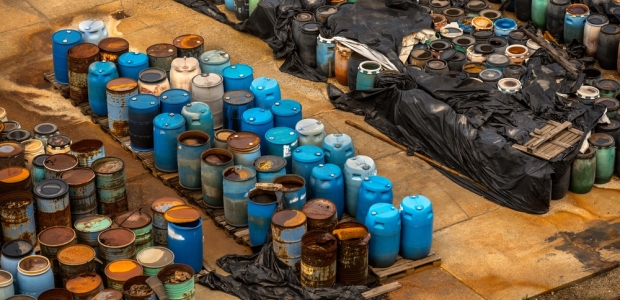
Production Materials Become Hazardous Waste Practically Overnight—EPA's Perspective on Abandoned Commercial Chemical Products
EPA has made checklists available to the regulated community, including the associated guidance regarding abandoned CCPs.
- By Paul Simonetta
- Nov 17, 2015
Production and storage areas in manufacturing and warehouse areas are filled with pallets, boxes, drums, and pails that contain chemicals and other materials. Some of these areas and containers are well organized, but others are not. Who decides whether these containers are full of production materials or hazardous waste? If a regulatory agency inspects a facility and decides that materials are "abandoned" because of poor housekeeping, sloppy management, etc., and records support that there is no useful purpose for these materials, they may be identified as hazardous waste. These materials that were thought to have been usable or sellable products would now be considered by the regulators as "abandoned" commercial chemical products (CCPs), causing the facility to be subject to hazardous waste requirements.
Regulatory agencies are aware of the potential impacts from leaks, spills, fires, explosions, etc. caused by containers of abandoned chemicals or waste materials. The intent of the solid and hazardous waste regulations is to address problems associated with waste materials and abandoned CCPs.
While it may be difficult to always control the routine storage and management of materials in production operations, the use of inspections checklists can be helpful. However, the conclusion that a CCP is abandoned based on physical appearance is subjective. Also, and possibly more important, the appearance of poorly managed materials may be defendable if documentation is developed that demonstrates these materials are not abandoned. Recommendations are provided below on developing programs to minimize the risk that your CCPs will be identified as hazardous waste.
Develop Waste Management Programs
One way to identify which materials are usable or sellable products is to document materials that are routine waste products. The development and continued update of an inventory of waste streams in a management program can be used to clearly identify which materials are wastes and which are not. Also, if production and storage space is available, it is best to segregate waste from raw or intermediate materials. The waste management program also should clearly identify storage locations for waste materials.
Identify Raw Materials, Intermediate Materials, and Sellable Byproducts
By default, materials that are not identified in a waste management program should not be considered a waste. However, to further demonstrate that materials are not waste, production or operating procedures can be developed that specifically identify input materials in batch/mixing formulas, process diagrams, or quality control instructions.
In some cases, materials may be produced as intermediate or byproducts that can be further processed or sold. In other cases, a batch of produced material that does not meet a customer's specifications may be reworked into other products. Containers, such as drums or tanks, that store these materials should be clearly marked and labeled as "in-process" or "byproducts" to distinguish them from waste storage. Operating procedures also should include details on container storage and labeling practices for these intermediate materials to document that they are not wastes.
Accounting or financial staff may not realize the implication of designating a material as a "waste" in spreadsheets, emails, or other documentation when it may have further use. Some level of awareness may need to be communicated to staff involved with potentially "writing off" these materials. Conversely, documentation should be established that these material will either be sold (market or potential market exists for it) or will be used again in the manufacturing process.
Use of Checklists
Regulatory agencies recommend the use of checklists for their inspectors to attempt to identify abandoned CCPs. However, EPA also has made these checklists available to the regulated community, including the associated guidance regarding abandoned CCPs. The implementation of a waste management program that incorporates the use of these checklists would likely be useful to defend against inspectors claiming that production materials are solid/hazardous waste.
Three checklists are included with the guidance. The first checklist (Section 1) is probably the most useful to the regulated community, as it can be used to gather information on the condition of containers and storage of production materials. Inspections completed using Section 1 can be used to develop work orders, corrective actions, etc. to respond to observed conditions that appear to be abandoned CCPs.
The second and third checklists (Sections 2 and 3) attempt to gather evidence regarding implementation of procedures and management practices associated with stored materials. For example, one question asks whether physical properties are established for raw or intermediate materials and if documentation has been developed to demonstrate the materials still meet these specifications. While this information may not need to be reviewed during each inspection, it may be useful to review on some frequency to verify that systems are in place and functioning to protect against materials being identified as abandoned.
About the Author
Paul Simonetta, CHMM, is a Vice President and Senior Project Manager at Triton Environmental, Inc. with more than 25 years of combined environmental compliance experience in industrial manufacturing and consulting. He received his Bachelor of Science degree from Fairfield University and his M.S. in Environmental Science from the University of New Haven. Triton is located at 385 Church Street, Suite 201, Guilford, Conn. For more information, contact him at 203-458-7200 or via e-mail at psimonetta@tritonenvironmental.com.